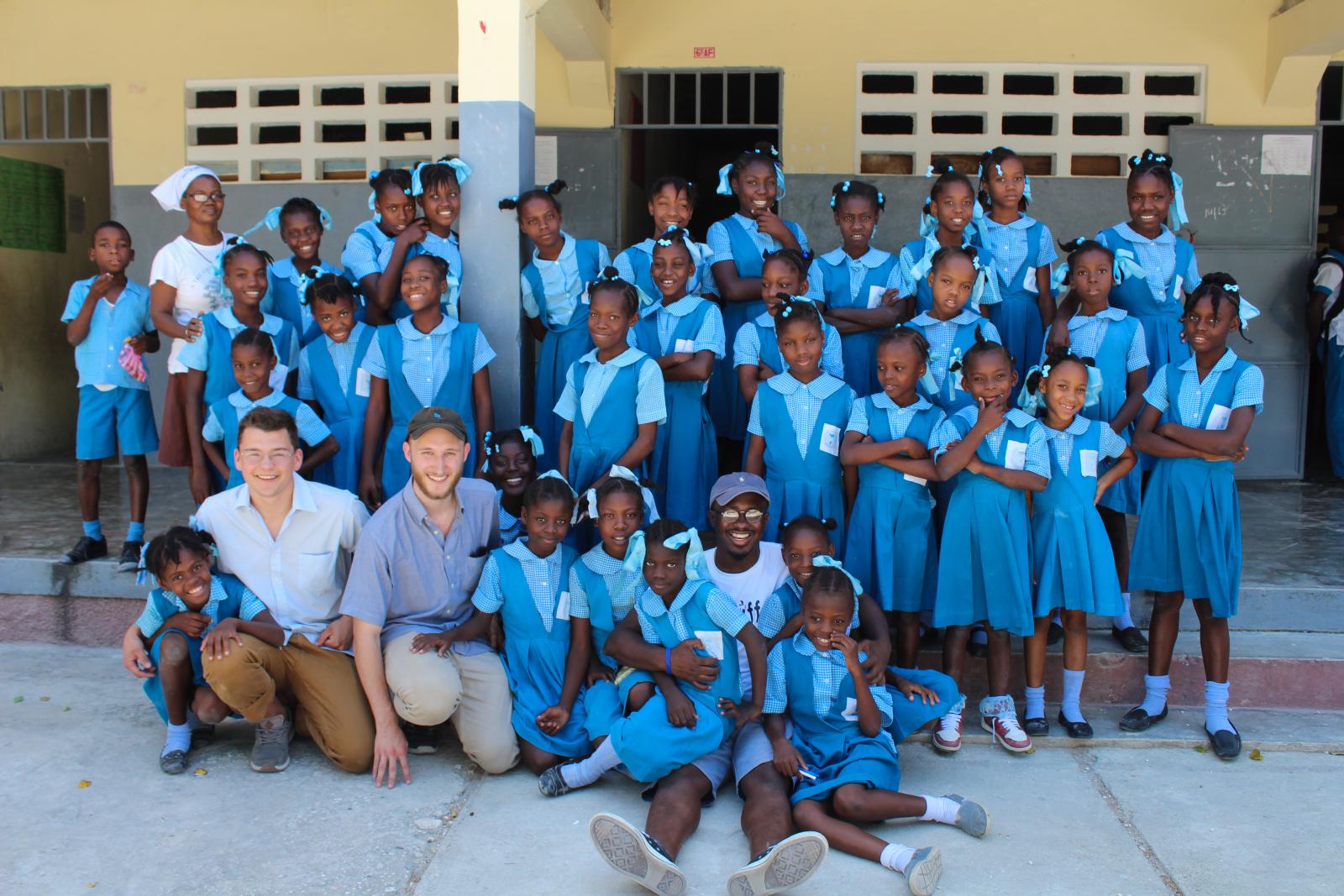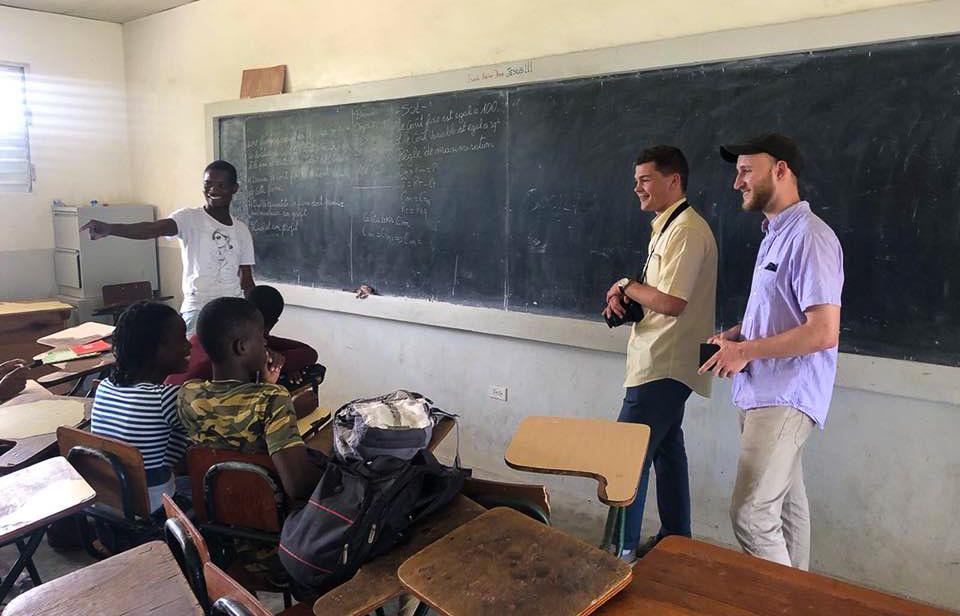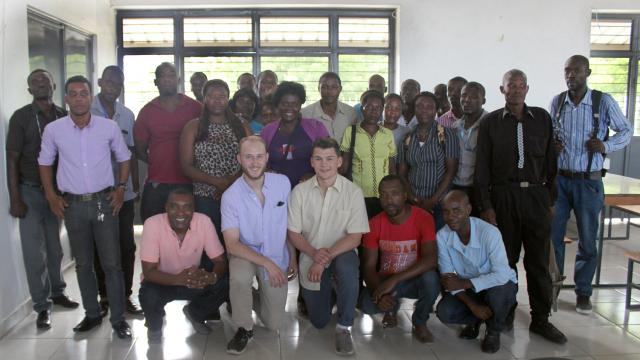For the past five years, Gérard Boulin, a program assistant for UMD’s Real Estate Development Program, has been quietly sending his spare cash and supplies collected from friends and colleagues to Haiti. This generosity is distributed through Boulin’s nonprofit SWIFF Inc. foundation, going to an orphanage for girls and for assisting his hometown of Léogane, Haiti.
Unbeknownst to Boulin, another endeavor was percolating just 100 feet away from his office. Senior architecture major Brian Houstle has spent the past two years banging on doors to raise money and recruit members to the first service-based student organization in the School of Architecture, Planning and Preservation’s 50-year history.
Called Roots Home & Abroad (Roots), it aims to promote sustainable design and building practices locally and around the world. Finding communities to work with locally was easy; landing an “in” with Haiti, the country Houstle hoped to work with long-term, seemed like more of a challenge.
A chance conversation with a co-worker led Boulin to Houstle, and today, Boulin’s vast knowledge and network in Léogane are helping the 33-member club design and build a community gathering space that will bring much-needed resources to its residents.
“This is something so much bigger than us,” said Boulin, who traveled in June with Houstle and Roots Vice President Nicholas Przybocki to Léogane. “It’s an opportunity to create something lasting and impactful, where children and families can flourish for years to come.”
The inaugural five-day trip, which provided a connection to elected officials, community members and Haitian architects and planners, offered important and surprising insights.
“We had it in our heads that a community recreation center would be a good asset but were taken aback by the profound basic needs not being met for many residents,” said Houstle. “Yes, communal amenities and gathering spaces are wanted, but so is access to clean water, electricity and bathrooms. It was not what we expected but will be critical in guiding the design.”
Léogane has many challenges—including no building codes and incomplete records of who owns what land—making Boulin’s role as a guide and cultural interpreter key to their first visit. His introductions to key stakeholders, such as the mayor, provided Houstle and Przybocki with critical background about the building process in Haiti and offered a glimpse of the country’s biggest asset: its people.
“Haitians have an overwhelming generosity of spirit,” Houstle said. “We felt so welcomed. And they love to laugh. Even though they face so many obstacles, they still find a way to laugh.”
Now, back in College Park, Houstle, Przybocki and Boulin are helping organize a fall seminar research course called “Building Abroad: Research and Practice,” which will examine the needs and assets of Léogane and be followed by a design studio/three-week charrette in the winter term that will end with another trip to Haiti. The semester-long research course, to be led by Roots and administered by mentor and co-teacher Professor Ronit Eisenbach, will feature talks with various professors and professionals in the building industry and is predicted to enroll 6 to 8 students who will study Haitian culture and sustainable design in developing countries. The final product will be a publication that will explore particular areas of the project—sustainable design, community participation, Haitian arts and architecture—and can later be used as the basis of design for a three-week charrette planned for the winter.
The goal of the winter volunteer studio is to use a charrette to produce 3 to 4 design concepts that can be brought to Haiti, where Roots will meet with the community for a second charrette. Within the second charrette, students will be teaching sustainable design techniques to the community while building their own understanding of Haitian culture. The results of the meetings will guide a planned (but not confirmed) spring curricular studio course, the goal of which is to finalize the schematic design. The process from concept to build-out will be lengthy—Houstle estimates a few years—and will include community meetings, multiple design iterations and critical fundraising to move the project forward. Once the design is complete, Roots will work with local officials and craftsman to organize a team of local builders to work alongside students in construction.
Boulin, who immigrated to the United States in 2000 and now the father of a young daughter, is keenly aware of what this will mean for his home country but is also excited for what it will offer the students.
“I see this as an opportunity for our students to make a personal impact and gain the tools they need to be successful leaders,” he said. “It’s not easy in Haiti, but we can do great things if we persevere.”





